Cisco CBS350-48FP-4X is a 48-sized, high-speed, fully managed gigabit switch with 4 × 10G SFP+ uplink ports and 48 PoE+ ports. It is a model of the Cisco Business 350 Series and is intended to offer Layer 2/3 switching, enhanced security, stacking capability, and enterprise-level features — directly for the small to medium business networks that need power, flexibility, and control.
Key Specifications
RJ-45 Ports
48 × 10/100/1000 Mbps (all are PoE/PoE+ enabled)
Uplink / SFP+ Ports
4 × 10G SFP+ uplink ports
PoE / PoE+ Support
IEEE 802.3af and 802.3at on all RJ-45 ports
PoE Budget
(Exact maximum budget not clearly indicated in summary; “FP” indicates full PoE support)
Layer 3 Routing
IPv4 static routing (wirespeed), up to ~990 static routes; IPv6 routing; policy-based routing (PBR)
VLAN Support
Up to 4,094 VLANs at once, 802.1Q tagging, private VLAN, guest VLAN, protocol-based VLANs, Q-in-Q, selective Q-in-Q
Link Aggregation
IEEE 802.3ad / LACP support — 8 groups, 8 ports per group, max, 16 candidate ports per group
Multicast / IGMP
IGMP snooping (v1/2/3), IGMP querier, IGMP proxy, multicast VLAN registration (MVR)
DHCP / Relay
DHCP server support (multiple pools), DHCP relay at Layer 3, relay across domains
Management / Control
Web UI, CLI, SNMP v1/v2c/v3, RADIUS/TACACS+, dual firmware images, stacking, secure management (SSH/SSL)
Stacking / Redundancy unit hardware stacking (handle up to 200 ports as a single entity)
Loop / Fault Protection: STP / RSTP / MSTP, UDLD (Unidirectional Link Detection), loopback detection, link protection
Operating Temperature: 32° to 122 °F (0° to 50 °C) for this version
Storage / Non-operating Temp:−13° to 158 °F (−25° to 70 °C)
Humidity: 10% to 90% (noncondensing) (operating & storage)
Dimensions (W × D × H): 445 × 350 × 44 mm (17.5 × 13.78 × 1.73 in)
Weight(Exact unladen weight not clearly defined in summary main) — datasheet might record “unit weight” in full text
Certifications: UL, CSA, CE, FCC Part 15 Class A
Key Features & Benefits
High-density PoE+ for demanding deployments
This model is equipped with 48 PoE+ ports and is ideal to power APs, IP cameras, VoIP, IoT devices, and more — all in one chassis.
10G uplinks give high-bandwidth backhaul
The 4 SFP+ 10G uplink ports provide abundant bandwidth to consolidate traffic to the network core or servers, avoiding bottlenecks.
Advanced Layer 2 / Layer 3 features
Supports static routing, policy-based routing, IPv6 forwarding, and enterprise switching features fully — so you can segment, route, and manage traffic inside the network.
Powerful VLAN & segmentation feature
With the ability to support thousands of VLANs, private VLANs, Q-in-Q, selective Q-in-Q, protocol-based VLANs, you can segment traffic intelligently (e.g. for guests, employees, IoT).
Scalable stacking & intuitive management
Stack up to 4 switches and treat them as a single unit — simplifies configuration, monitoring, and failover.
Redundancy & protection features
Improves support for STP versions, UDLD, loop detection, link aggregation, link protection and failover to guard against topology defects.
Multicast and IPTV support
IGMP snooping, querier, and proxy support efficiently control multicast traffic and IPTV in campus or branch networks.
Dual firmware / upgrade security
Dual images allow you to experiment with new firmware and roll back in the event of a requirement with low downtime risk.
Secure and enterprise-class management
RADIUS/TACACS+ support, secure SSH/SSL management, role-based access control, and ACLs provide hardened network edge.
Effective energy and noise design
With effective hardware and thermal design; ideal for wiring closet or network room installation without excessive noise.
Use Cases & Deployment Scenarios
Campus / branch core access layer
Preferred for connecting end devices (APs, cameras, desktops) and aggregating to core routers or switches.
Wireless infrastructure aggregation
Power scores of Wi-Fi 6 / Wi-Fi 6E / Wi-Fi 7 access points with headroom in the uplink.
Surveillance / security systems
Power IP camera fleets, analytics nodes, and security sensors across the site.
Converged networks (voice, video, data, IoT)
Handle mixed traffic types, segregate with VLANs, and prioritize QoS-sensitive apps.
Edge routing & segmentation
Employ its Layer 3 feature for routing between VLN, PBR, or routing at remote locations, offloading load from higher-end routers.
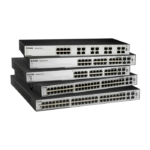
 POE Switch
POE Switch Managed
Managed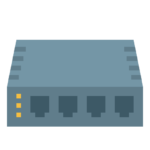 Unmanaged
Unmanaged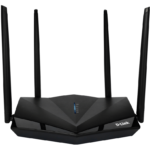
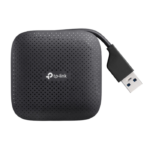

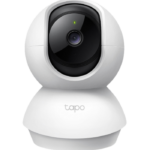
 Surveillance Cameras
Surveillance Cameras Security Equipment
Security Equipment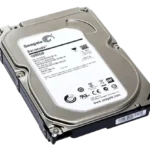



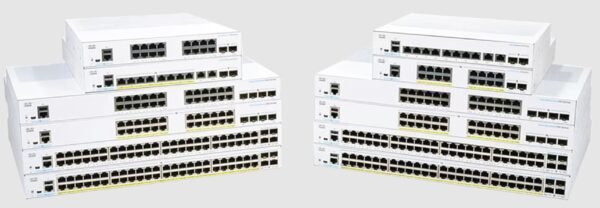




Reviews
Clear filtersThere are no reviews yet.